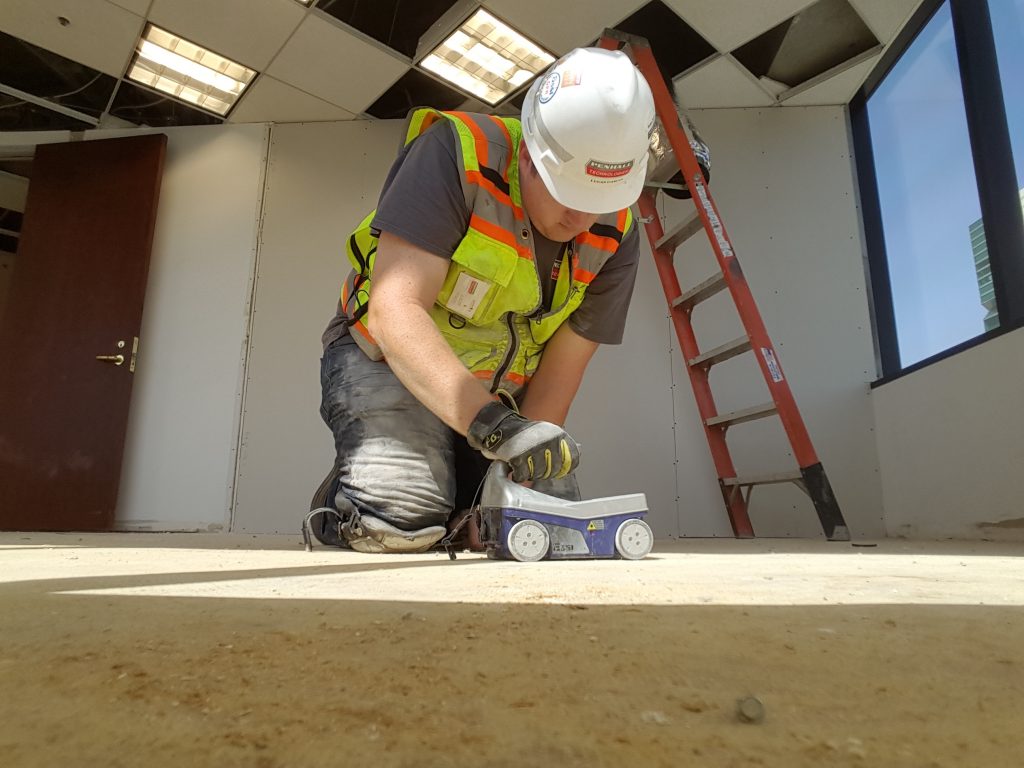Comprehensive Guide to Concrete Scanning Technologies
Unveil the Transformative Power of Concrete Scanning in Making Best Use Of Effectiveness and Safety
Concrete scanning has actually emerged as an essential tool in the construction market, offering unequaled benefits in boosting project effectiveness and ensuring security criteria. By using innovative technology, concrete scanning enables specialists to see beyond the surface area, revealing covert intricacies that can affect the architectural integrity of a building. The transformative power of concrete scanning depends on its capacity to provide real-time information and detailed insights, transforming exactly how jobs are intended and performed. As we dig right into the intricacies of this ingenious method, a globe of opportunities opens, showcasing a brand-new era of building methods that focus on accuracy and safety.
Significance of Concrete Scanning
Ensuring the architectural stability and safety and security of construction tasks begins with the vital step of carrying out complete concrete scanning. Concrete scanning is a non-destructive method used to discover and map subsurface elements within concrete frameworks.
The relevance of concrete scanning can not be overemphasized, as it plays a crucial duty in avoiding crashes, reducing task delays, and guaranteeing the long-term durability of the construction. By determining prospective threats prior to the construction phase starts, builders can carry out suitable precaution and make educated choices concerning the layout and execution of the project. Furthermore, concrete scanning assists in maximizing task timelines and budget by preventing unforeseen expenses and hold-ups that might occur because of unanticipated blockages within the concrete. Inevitably, purchasing detailed concrete scanning is an aggressive strategy that enhances both efficiency and safety in building jobs.
Exactly How Concrete Scanning Functions
Concrete scanning runs as an essential device in building and construction tasks by using sophisticated technologies to detect and map subsurface aspects without causing architectural damages. Ground Penetrating Radar (GPR) and Electromagnetic Induction (EMI) are two key techniques made use of in concrete scanning.
During the scanning process, the data gathered is assessed in real-time, enabling instant recognition of prospective hazards or barriers under the surface. This information help in decision-making, making sure that building tasks continue securely and effectively. Furthermore, 3D imaging software can be used to develop comprehensive maps of the subsurface elements, further boosting project planning and implementation. By using these advanced modern technologies, concrete scanning dramatically reduces the danger of expensive problems and injuries on construction websites.
Benefits of Concrete Scanning
One of the primary benefits of concrete scanning is the capacity to find and situate ingrained objects such as rebar, post-tension wires, and channels precisely. Concrete scanning aids in preparation and developing more successfully, as it offers exact info regarding the place and deepness of architectural parts.

Study: Concrete Scanning Success

In another situation, a building firm used 3D concrete scanning to examine the condition of maturing concrete frameworks in a historic building. The in-depth scans provided useful insights into the extent of wear get redirected here and tear and helped focus on upkeep initiatives efficiently. By proactively dealing with areas of problem recognized with scanning, the business was able to expand the life-span of the framework and guarantee resident security.
These case researches emphasize the transformative power of concrete scanning in boosting efficiency, accuracy, and safety and security in building and construction jobs.
Executing Concrete Scanning in Projects
Carrying out innovative scanning innovations throughout building and construction projects has become increasingly essential for improving precision and security. By integrating concrete scanning into job preparation and implementation, construction teams can recognize potential dangers, such as rebar or post-tension cables, hidden within concrete frameworks. This positive technique reduces the danger of crashes, delays, and costly rework, inevitably leading to much more efficient task timelines and spending plans.
To carry out concrete scanning efficiently, project supervisors ought to collaborate carefully with seasoned scanning experts to identify one of the most suitable scanning methods for the details job requirements. Involving scanning specialists from the onset of a project makes it possible for the group to create detailed scanning plans that attend to crucial areas of problem and guarantee extensive data collection.
Moreover, incorporating concrete scanning into regular job workflows can check out here simplify decision-making procedures, as real-time check data offers instant understandings right into the problem of concrete structures - Concrete Scanning. This data-driven strategy assists in educated analytical and enables teams to make changes without delay, cultivating a society of performance and safety and security throughout the job lifecycle

Final Thought
Finally, concrete scanning plays an important role in enhancing effectiveness like this and safety in building tasks. By using innovative innovation to map and discover out underlying frameworks within concrete, this process aids to stop pricey errors, make certain architectural honesty, and minimize threats on website. With the ability to discover covert components and provide accurate information, concrete scanning shows to be an important device for enhancing task end results and maximizing total success.
Concrete scanning is a non-destructive technique made use of to detect and map subsurface elements within concrete structures. In addition, concrete scanning helps in maximizing job timelines and budget by preventing unexpected expenses and delays that might emerge due to unexpected blockages within the concrete. One noteworthy instance research includes a massive improvement project where concrete scanning played an important role in making certain job success.In another instance, a building firm made use of 3D concrete scanning to assess the condition of aging concrete structures in a historical building. By integrating concrete scanning right into project preparation and execution, construction teams can recognize prospective dangers, such as rebar or post-tension cords, hidden within concrete structures.